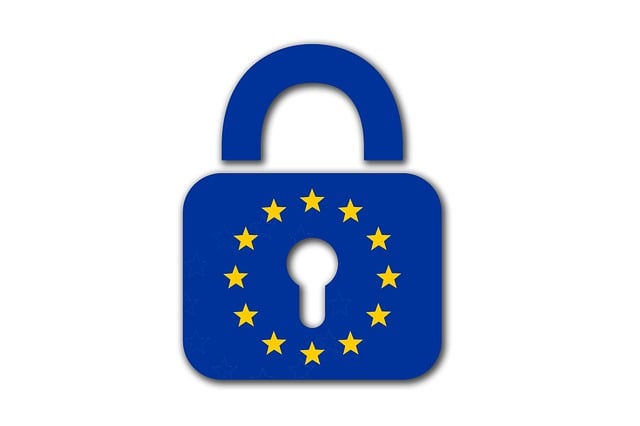In the digital age, banking background verification is vital for financial institutions to combat fraud. By examining financial histories and cross-referencing data, it detects risks like identity theft, money laundering, and fraudulent activities. This process empowers informed decisions, protects customers, and safeguards the financial system from sophisticated scams. Robust verification offers in-depth analysis of transaction records and identities, leveraging technology for early detection and risk assessment, fostering trust, and enhancing customer satisfaction.
Financial background checks are a powerful tool in the fight against fraud. With ever-evolving schemes, understanding the impact of thorough financial screenings is crucial. This article delves into the significance of banking background verification, exploring common fraud vulnerabilities and how it acts as a shield. We’ll guide you through implementing robust security measures and due diligence processes, ensuring a comprehensive approach to mitigate risks associated with financial transactions and build a safer banking environment.
- Understanding the Impact of Financial Background Checks
- Common Fraud Schemes and Their Vulnerabilities
- The Role of Banking Background Verification in Prevention
- Implementing Effective Security Measures and Due Diligence
Understanding the Impact of Financial Background Checks

Financial background checks, often referred to as banking background verification, play a pivotal role in mitigating fraud risks across various financial institutions. By delving into an individual’s or entity’s financial history, these checks provide crucial insights into their credibility and trustworthiness. This process involves scrutinizing financial records, credit reports, and transaction patterns to identify any discrepancies or suspicious activities.
Such verification is essential in today’s digital era, where fraudsters employ sophisticated methods to manipulate banking systems. A robust financial background check can uncover potential red flags, such as identity theft, money laundering, or fraudulent transactions. This proactive measure allows financial institutions to make informed decisions, protect their assets, and safeguard their customers from becoming victims of fraud.
Common Fraud Schemes and Their Vulnerabilities

Common Fraud Schemes and Their Vulnerabilities
In today’s digital era, fraudsters are leveraging sophisticated techniques to exploit financial systems. One prevalent scheme involves identity theft, where criminals steal personal information to open fraudulent accounts or make unauthorized transactions. This vulnerability can be addressed through robust banking background verification processes that cross-reference sensitive data against reliable databases. Another common manipulation is the use of false documentation, such as fake IDs or forged paperwork, to gain access to financial services. Implementing thorough background checks can mitigate these risks by verifying the authenticity of documents and establishing a reliable historical record of an individual’s financial activities.
Additionally, investment scams have become increasingly sophisticated, with fraudsters luring victims with promises of high returns on investments that never materialize. Background verification plays a crucial role in identifying patterns of fraudulent behavior and previous involvement in such schemes. By scrutinizing an individual’s financial history and associations, banks and financial institutions can significantly reduce the risk of these types of fraud, protecting both their customers and the broader financial landscape.
The Role of Banking Background Verification in Prevention

Banking background verification plays a pivotal role in mitigating fraud risks within the financial sector. By delving into an individual’s or entity’s banking history, this process uncovers potential red flags and inconsistencies that could indicate fraudulent activities. It involves cross-referencing data from various sources, such as financial institutions, credit bureaus, and public records, to ensure the accuracy and authenticity of banking information. This verification step is crucial for maintaining the integrity of financial transactions and safeguarding against sophisticated scams.
In today’s digital era, where fraudsters employ intricate methods to exploit vulnerabilities, robust banking background checks become an indispensable tool. These verifications help financial institutions make informed decisions, enabling them to detect and prevent fraudulent schemes like identity theft, money laundering, and false investment opportunities. By implementing stringent background verification processes, banks and financial organizations can foster a more secure environment for their customers, reduce the likelihood of significant losses, and protect the overall stability of the financial system.
Implementing Effective Security Measures and Due Diligence

Implementing robust security measures is a cornerstone in mitigating fraud risks, especially within the financial sector. Banking background verification plays a pivotal role in this process by providing an in-depth look into a customer’s financial history and identity. This due diligence step involves rigorous screening of personal information, transaction records, and credit behavior to identify any potential red flags or suspicious activities.
By utilizing advanced technology and data analytics, financial institutions can thoroughly assess the risk associated with each client. Effective banking background verification ensures that fraudulent activities are detected early on, allowing for swift action to protect both the institution and its customers. Moreover, it fosters trust and enhances customer satisfaction by demonstrating a commitment to security and transparency.














